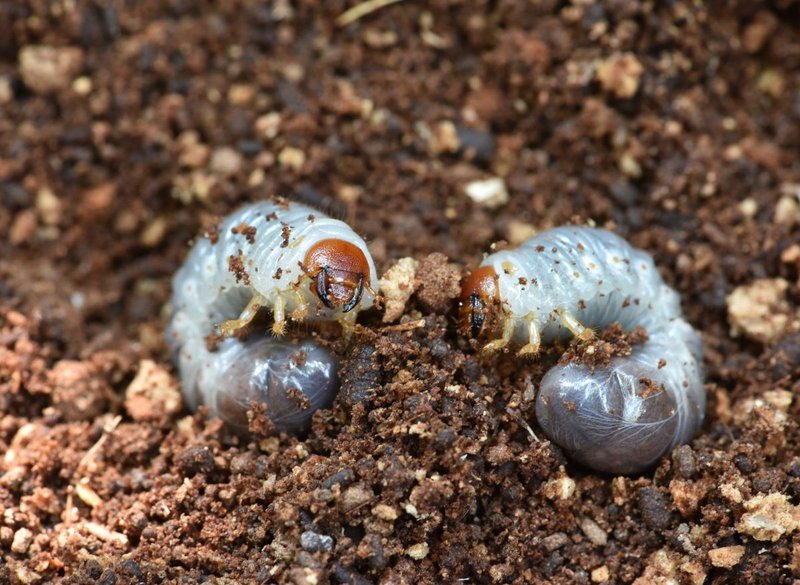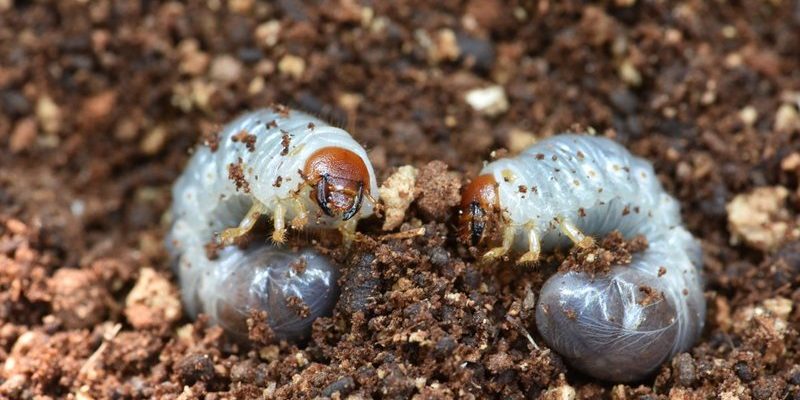
Grub worms, often in their larval stage, are the offspring of certain beetles. They love to feast on the roots of your precious plants, causing damage that can lead to wilting or even death of your plants. Think of them as the sneaky bandits of your garden—their impact can sneak up on you before you even realize it. So, how do these pesky little worms affect your beloved potted plants, and what can you do about them? Let’s dig in!
What Are Grub Worms?
Grub worms are generally the larvae of beetles, like Japanese beetles or June bugs. They have a soft, white, C-shaped body and can grow up to an inch long. If you picture a tiny, wriggling worm, that’s pretty much what they look like! These little guys primarily thrive in soil and often hide out in the organic matter found within your pots.
Their life cycle starts when adult beetles lay eggs in the soil. Once those eggs hatch, the newly formed grubs start munching on grass roots and other plant roots, including those of your potted plants. This early phase of their life is when they can cause the most damage. You might be thinking, “Okay, but why should I care about grub worms?” Well, if you notice your plants looking droopy or unhealthy, it could be due to these pesky invaders tunneling through the roots.
How Do Grub Worms Impact Potted Plants?
The effects of grub worms on your potted plants can be quite serious. As they feed on the roots, they essentially starve your plants of the nutrients and water they need to thrive. When a plant’s roots are damaged, it can lead to a range of issues. You might see wilting leaves, yellowing foliage, or even plant death in severe cases.
By snacking on the roots, grub worms disrupt the vital connection between the plant and the soil. Think of it like severing communication lines; without roots to absorb water and nutrients, your plants struggle to survive. It’s like trying to run a marathon with a broken leg—just not going to happen!
Also, keep in mind that grub worms can make your plants more susceptible to diseases. A weakened plant is an easier target for fungi and other pathogens. So, dealing with grub worms isn’t just about the immediate damage; it’s about protecting the overall health of your green companions.
Signs of Grub Worm Infestation
It’s crucial to catch grub worms early before they wreak havoc on your plants. Here are some signs to watch for:
- Wilting Leaves: If your plants are drooping but the soil is moist, that’s a red flag.
- Yellowing Foliage: This can indicate that the roots aren’t absorbing nutrients properly.
- Soft, Mushy Roots: Pulling up a plant and noticing mushy roots is a telltale sign of grub damage.
- Missing Grass or Plant Patches: Grubs often attack the roots of neighboring plants too, leading to patches of dead or dying plants.
If you notice one or more of these signs, it’s time to investigate further. Don’t wait for the situation to escalate—addressing it early can save your plants from severe damage.
How to Check for Grub Worms
So you think you might have a grub worm problem? Here’s how to check for them in your potted plants:
1. **Inspect the Soil**: Gently lift the plant out of the pot and examine the soil. You’re looking for soft, white, C-shaped worms, as well as any evidence of root damage.
2. **Feel for Root Damage**: If the roots feel mushy or look discolored, that’s a sign something isn’t right.
3. **Monitor Soil Health**: Look for any changes in the moisture levels or texture of the potting mix. A sudden change can indicate a grub infestation.
4. **Check Nearby Plants**: Don’t just stop at one pot. Check others in proximity—grubs often spread from one plant to another.
By carrying out these checks regularly, you can keep your plant family safe from these unwelcome guests.
Remedies for Grub Worms
If you’ve confirmed that grub worms are indeed causing chaos in your pots, then it’s time to take action. Fortunately, there are several effective methods to deal with them:
- Handpicking: If the infestation is small, you can simply pull them out by hand. It’s a bit gross, but it works!
- Beneficial Nematodes: These microscopic worms are natural predators of grub worms and can be introduced to the soil to reduce their numbers.
- Insecticidal Soaps: These can help control grub populations while being safe for your plants. Just be sure to follow application instructions.
- Crop Rotation: If you’re planting seasonal herbs or flowers, rotating them can disrupt the life cycle of grub worms.
Each method has its pros and cons, so you might want to try a combination to see what works best for your situation.
Preventing Grub Worm Infestations
Prevention is always better than cure. Here are some tips to keep grub worms at bay:
– **Healthy Soil**: Start with high-quality potting soil. Healthy soil is less hospitable to pest larvae.
– **Consistent Watering**: Keeping your plants well-watered can help them withstand some root damage and promote strong growth.
– **Regular Inspections**: Pay attention to your plants regularly. Early detection can make all the difference.
– **Companion Planting**: Some plants naturally repel beetles, which can help you avoid grub issues down the road.
By following these practices, you’ll not only protect your plants from grub worms but may also enhance their overall health and appearance.
Grub worms can be a serious threat to your potted outdoor plants, but knowing how to spot and handle them can make a big difference. Remember, the key is to stay vigilant. Regularly check your plants, invest in good soil, and consider some preventive measures.
By nurturing your plants properly and acting quickly against these pesky pests, you can keep your little oasis flourishing. So next time you’re enjoying the beauty of your garden, you’ll know you’ve got a handle on keeping it safe from unwelcome grub worms! Happy gardening!

